Lloyd Pietrantonio Ruocco
Architect | 1907 - 1981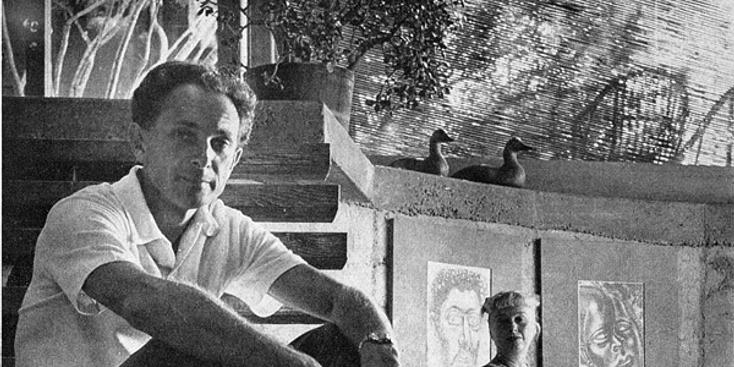
As a young man Lloyd Ruocco worked alongside Richard Requa, William Templeton Johnson and Lillian Rice. His early designs (1937-52) were almost without fail exposed redwood with flat but primarily shed roofs. These designs, organizations he fostered, and talent he mentored led him to garner respect as a key figure in 20th century modernism in the region.

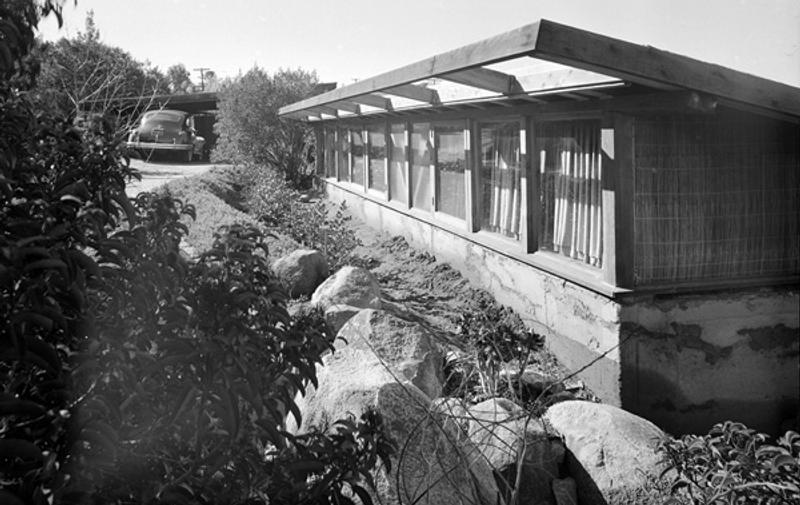
By Todd Pitman, edited by Keith York
Lloyd Pietrantonio Ruocco was born in Maine, in 1907, only a handful of years prior to his family relocating to San Diego County in the early 1920s. Following stops in Hillcrest and City Heights, they settled near Santee on what would become family ranch land.
After competing in the home design competition for Kensington Heights, young Lloyd started working in the office of architect Richard Requa (while attending San Diego High School). Shortly thereafter, Ruocco took drafting courses from architect Lillian Rice (who was on staff with Requa) at San Diego State College and worked with her on the Ranch Santa Fe Master Plan. Both Rice and Requa compelled Ruocco to transfer from San Diego State to Berkeley and major in architecture. Following graduation from Cal, he returned to San Diego, and gained valuable experience in the offices of architects Richard Requa and William Templeton Johnson.
Just two years following his partnership with Kenneth Messenger displaying modern home designs at the California Panama Exposition in Balboa Park in 1935, he produced a key home often referenced as in the “international style” in South Park in 1937 - the Clitsome Residence.
During World War II, Ruocco served as the US Navy’s head draftsman in the 11th Naval District. He married Ilse Hamann, an art and interior design instructor at San Diego State College, in 1944. And built the first home for themselves in 1946 in La Mesa’s Briercrest neighborhood.
Growing increasingly dissatisfied with the rehashed revival styles that prevailed through the thirties, Ruocco opened his own offices in hopes of bringing a more modern style of architecture to San Diego. He along with his wife Ilse Hammon Ruocco, an interior designer and artist, would go on to become San Diego’s pioneering post-war modernists. Designing
well over 100 projects throughout San Diego County, Lloyd is responsible for several projects that are considered by many, to be some of the area’s best examples of the period.
“Good architecture should call for the minimum use of materials for the most interesting and functional enclosure of space” - Lloyd Ruocco FAIA
An early tour de force, Ruocco’s Design Center (1949) on Fifth Avenue was both a retail outlet and interior design firm run by Ilse, his own architecture practice as well as hosting office space for publishers, artists, designers, and landscape architects for decades. An example of what writer Jim Britton deemed his “phantom architecture” the building is nearly invisible to the passerby in contrast to the bulking heavy buildings of the downtown-to-Hillcrest corridor.
Ruocco’s influence would lead to a number of architecture commissions, and be shared across a number of his visionary gatherings and presentations. He and Ilse would lead artists, architects and urban planners across in helping establish the Allied Artists Council and Citizens Coordinate for Century 3 organizations. He mentored a significant number of architects including Homer Delawie that would launch his own multi-decade practice in the early 1960s.
Ruocco’s public projects for the San Diego Zoo, as well as San Diego Civic Theater, and the IGPP building at Scripps Institution of Oceanography have put his ideas in public spaces. While public commissions are often where regional architects cement their legacy – we experience their articulation of a number of ideas through their residential commissions.
Universally respected as one of San Diego’s fathers of the post war modern architectural movement, Ruocco was equally devoted to the art community as well as the city itself. His ultimate goal was to better the lives of the people of San Diego through his tireless efforts to promote and encourage art, architecture and design; many would say that he achieved his goal. Instrumental in founding several community design organizations, Citizens Coordinate for Century 3, Allied Artists and Allied Craftsmen. Lloyd Ruocco laid the foundation for architects, artists and designers to come.
“He was the person to whom you turned for inspiration. He was the modernist.” - Bob Mosher FAIA
Early designs (1937-52) were almost without fail exposed redwood with flat but primarily shed roofs. Ruocco made use of indirect lighting above interior soffits, built-in bookshelves frequently running the length of the floor. Fireplaces were built-in and typically stone. Most of the designs of this period made use of concrete floors and in many cases used organic materials in their natural form. Boulders are found piercing glass walls; unmilled lumber is used lavishly in some early designs. In the case of his first residence, ‘Il Cavo’, driftwood is used as towel hangers, hardware on doors and in various other forms. Ruocco’s later work although extremely progressive by San Diego standards was similar in design to many other architects practicing throughout Southern California. The early designs seemed indigenous; they were his own. His designs of this period were far less influenced by the design trends occurring in Europe and Los Angeles.
“There is this term, ‘a Ruocco house’. There are a few architects who get to that point but not many” - Leonard Veitzer FAIA
In the early fifties and following the completion of his second home ‘Solari’ Ruocco seemed to depart in some part from is early more organic designs and began to favor a sleeker style. Possibly inspired by the case study program coordinated by then editor of Arts and Architecture John Entenza, Ruocco began designing glass, wood, steel, and concrete homes based on modular design. This style minimized construction costs as it utilized lumber in standardized dimensions. Designs from this period became architecturally less complex, offering open and often flexible floor plans. Ruocco often included homes with walls that could be moved on tracks to allow space to be modified to accommodate the changing lives of their inhabitants. These homes nearly all were equipped with radiant heat in the floor, ceiling or both. They most often contained metal prefabricated fireplaces rather than the elaborate stone of his earlier designs. Glass was used even more lavishly than before, exposed wood beams and ceilings were used less often, as plaster ceilings became far more prevalent. Based on post and beam construction methods, these homes are almost always rectangular in design and although many contain extensive built in cabinetry of Ash and Mahogany they seem much simpler and more open as compared to the earlier organic designs.
Elements of Ruocco's Design
Buildings were primarily redwood and glass. Preferred concrete floors most notably in early designs. Homes were always sited to maximize views. Home sites were nearly always proposed just below the crest of a slope offering the inhabitant the optimum privacy. This type of siting is what Wright referred to as high braw siting. Preferred Re-sawn lumber for its more natural appearance. Used redwood, red cedar and ash for most of his designs. Post and beam construction provided maximum spaciousness and eliminated the need for load bearing interior walls. Frequently limited interior walls to door height (6’ 8”) and made up difference with fixed glass transoms or clearstory windows. Often worked with difficult sites requiring unique footing and foundation designs. Homes rarely found on flat lots. Red Cedar tongue and groove ceilings and exposed redwood beams were common. Rough sawn redwood board on board siding. Glass panes tend to be sandwiched between post and exterior siding. Showers located at corners of residence allowing for garden views from glass wall enclosures. Use of ‘Suntile’ line of ceramic unglazed tiles made by the Cambridge Tile. Crane and American Standard bathroom fixtures. Some early designs utilized indigenous rock mixed with concrete mortar to produce exterior as well as interior walls.
The Ruocco Office in Transition
As Mr. Ruocco planned for extended international travel in 1960-61, he and Homer Delawie agreed to join in partnership (Homer was a registered/licensed architect so he could run the firm in Ruocco’s absence). The Ruocco & Delawie, AIA office came together and began securing commissions, such as the Senterfit Residence, as Ruocco firmed up his trip. During part of 1960 and 1961, Ruocco was on travel and Delawie began making plans for his own firm. By the time construction began on Senterfit Residence (circa July, 1961), Homer left the partnership along with Ruocco & Delawie, AIA employees Bill Fisher, Frank White, Jack Matteson, and Al Macy among others. The Chernoff Residence was initiated under the Ruocco & Delawie, AIA office and completed by Ruocco. Delawie clearly gives credit to Ruocco for the project in his FAIA nomination. Some of Ruocco's original employees, like Jack Matteson and Bill Slatton, would later return back to his employment after stints in Delawie's office.
Partial Project List
Allan, Mr. & Mrs. John N. Residence (Jan. – Feb. 1961)
8080 El Paseo Grande, La Jolla
*Designed by Ruocco & Delawie, Architects. Unclear if it was built on this site
Amrein Residence (1956)
5020 Yerba Santa Drive, Alvarado Estates
Arenson Residence (1970)
4727 Avion Way, Alvarado Estates
Avocado Professional Group Medical and Dental Center (1971)
230 Avocado, El Cajon
Baranov, Nate Residence (1948)
Del Mar
Baranov, Sylvan Residence I (1949)
736 Armada Terrace, Point Loma
Barwick Residence (1955)
3260 Kenora Drive, Spring Valley
Beaudette, Mr. & Mrs. Residence for McKellar & Wyer (February 1960)
8348 Paseo Del Ocaso, La Jolla
*Designed by Ruocco & Delawie, Architects. Unclear if it was built on this site. There appear to be other projects nearby that may have been built by McKellar and Wyer. Mckellar’s family owned many of the parcels in this area.
Beers, Mr. & Mrs. Wm. N. Residence (built in 1954; remodeled in 1964)
631 N. Crescent Court, Mission Hills
Bleecker, Frank E. and Mae I. Residence (1942-49)
9830 Edgelake Drive, La Mesa
*Published as the 'Three Wishes House' by Good Housekeeping; Designated as the Burton I. Jones House (1950). Jones was the second owner.
Boss Residence (1968)
9434 Sierra Vista Avenue, La Mesa
Boughman, Mr. & Mrs. Henry Residence (1955)
5615 Dorothy Way, College Area
Burke, Mr. and Mrs. Jack Residence (1960)
2322 Hartford Street, Bay Park
*Designed by Ruocco & Delawie, Architects
Burke, Mr. & Mrs. J.L. Residence (January, 1960)
8364 Paseo Del Ocaso, La Jolla
*Designed for Lot 10, Block 25 of El Paseo Grande by Ruocco & Delawie, Architects; possibly a McKellar & Wyer project
Burnett Residence #1 (1949)
2417 Pine Street, Mission Hills
Burnett, George Residence (1960)
3223 Zola Street, Point Loma
Burnett, William Residence (1971)
3576 Via Flores, Point Loma
Burnett’s Furniture Chula Vista (1955)
345 E Street, Chula Vista
Burnett’s Furniture San Diego (1955)
633 University Avenue, Hillcrest
Burton House (1959)
2180 Calle Frescota, La Jolla
California Steel Building (1965)
Main Street, San Diego
Charles Hair Stylist Beauty Salon (1960)
College Grove Shopping Center, Space B-20
*Designed by Ruocco & Delawie, Architects for Blough & Bradshaw, Owners
Chernoff, Howard Residence (1960)
4522 Trias Street, Mission Hills
*Designed by Ruocco & Delawie, Architects
City Concourse Plaza (1964)
1964 Front Street, San Diego
Civic Theater (1963-1964)
1100 Third Avenue, San Diego
*With William Rosser and Seldon Kennedy
Clitsome Residence (1938)
2228 33rd Street, South Park
Cole Residence (1952)
5628 Nokomis, La Mesa
Commercial Building (1951)
145 Washington Street, Hillcrest
County Administration Building (1933)
1600 Pacific Coast Highway, San Diego
*With Richard Requa, William Templeton Johnson and Sam Hammill
Crates, Dennis Residence (1948)
4436 Lister Street, Bay Park
Creel Residence (1950)
1149 Franciscan Way, University Heights
Cunningham Residence (1959)
445 Hidden Pines Lane, Del Mar
*Designed by Ruocco & Delawie, Architects
Design Center, The (1949)
3611 5th Avenue, San Diego
Dodd Residence (1952)
8520 Boulder Drive, La Mesa
Douglas, A.J. Residence (1947-48)
La Mesa
Edel, Dr. Residence (1962)
1317 Windridge Drive, El Cajon
Feller Residence and Addition(1960)
3377 Charles Street, Point Loma
*Designed by Ruocco & Delawie, Architects
Foodmaker Restaurants (1964)
Location(s) not known
Fortiner, Samuel & Charlotte Residence (1949)
811 Di Giorgio Road, Borrego Springs
*Published in Redbook in January, 1951
Foster, Mr. and Mrs. Robert N. Foster Residence & Landscape (1960)
3343 Poe Street, Point Loma
*Designed by Ruocco & Delawie, Architects. Published in Arts & Architecture as 'Hillside House'
Freedman Residence (1952)
620 Albion Street, Point Loma
Frivaldsky, Residence for Mr. & Mrs. Joseph (1959-61)
1945 Balboa Avenue, Del Mar
*Designed by Ruocco & Delawie, Architects
Garden Villa Model Home (1953)
Balboa Park
*Temporary exposition house, later disassembled and used in construction of Solari.
Garland Residence(1960)
1910 South Juniper, Escondido
*Designed by Ruocco & Delawie, Architects
Gilchrist Residence (1959)
2021 Rodelane Street, Mission Hills
Goldberg, Edward & Betty Residence (1957)
2614 Ellentown, La Jolla
Goodman Residence (1953)
2414 Marilouise Way, Mission Hills
Gray, Garland Residence (July, 1960)
Juniper Street at Eldorado Drive and E. Vermont, Escondido
*Designed by Ruocco & Delawie, Architects
Green Residence (1949)
2847 Arnott Street, Bay Park
Greene, Ethel Residence (1946)
2940 Helix Street, Spring Valley
Herrera Residence (1970)
1108 Dawnridge Avenue, El Cajon
Holmgren, Richard Residence (1948)
10037 Ward Lane, La Mesa
Institute of Geophysics & Geoplanetary Physics (1964)
8602 La Jolla Shores Drive (AKA 8800 Biological Grade), La Jolla
*On the National Register of Historic Places
Ishikawa, Wesley & Margaret Residence (1968-69)
9141 Wakarusa Street, La Mesa
*Demolished. AKA Grossmont Spec House
Jacobson, Mr. & Mrs. Isadore Residence (1949)
9175 Lavell Street, La Mesa
Jackson, Marvin Residence (1949)
4421 Mayapan Drive, La Mesa
Jackson Scott Tract Designs (1949)
Various Streets, Point Loma
Johann, Dr. and Mrs. O.P. Residence (1956)
4511 Miramonte Street, La Mesa
Johnston Residence (1961)
8272 El Paseo Grande, La Jolla
*Designed by Ruocco & Delawie, Architects. Built by McKellar Wyer
Judd Residence (1952)
3527 Lark Street, Mission Hills
Kaye, Peter Residence (1957)
240 Ocean View Avenue, Del Mar
Keller Residence #1 (1944)
3039 F Avenue, National City
Keller Residence #2 (1947)
1433 Puterbaugh Street, Mission Hills
Keller Residence #3 (1963)
9405 La Jolla Farms Road, La Jolla
KOGO-AM/FM/TV (1958)
4600 Air Way, San Diego
Lamplighter, The (1955)
827 Washington Street, Mission Hills
Lange, Mitchell & Marian Residence (1948)
6051 Folsom Drive, La Jolla
Lard Residence & Additions (Wexman)(1961)
2218 Vallecitos, La Jolla
*Designed by Ruocco & Delawie, Architects. Built by McKellar Wyer
Lee Geier Ski Lodge (1951)
Aspen, Colorado
Lemon Avenue Elementary (1957)
8787 Lemon Avenue, La Mesa
Leon Lane (1950)
8371 La Mesa Boulevard, La Mesa
Libby, Residence for Mr. & Mr.s Paul A. (1966-67)
7846 Esterel Drive, La Jolla
Lillie Residence (1958)
4410 Carmen Drive, La Mesa
Linton, Russ Residence (1955)
2524 44th Street, City Heights
*Partially destroyed by fire in 1978
Luci Residence (1966)
1649 Lugano Lane, Del Mar
Lutz Residence(1950)
1360 Pine Drive, El Cajon
Marshall, Dr. & Mrs. Adrian Residence (1961)
2767 Hidden Valley Road, La Jolla
*Designed by Ruocco & Delawie, Architects
Martin Residence (1955)
4472 Arista Street, Mission Hills
McKellar & Wyer Duplex – AKA Rucker Smith Duplex (February 1960 – November 1961)
8015-8017 El Paseo Grande (Lot 18, Block 7), La Jolla
*Designed by Ruocco & Delawie, Architects
Medical Dental Building for Drs. Millman & Campbell (1959)
2630 First Avenue, Bankers Hill
Medical Center for Gifford Enterprises (1960)
El Cajon Blvd & 71st Street, La Mesa
*Designed by Ruocco & Delawie, Architects
Miller, Mr. & Mrs. David Residence & Addition (1961)
2591 Via Barletta, La Jolla
*Designed by Ruocco & Delawie, Architects
Mills Office Building (1964)
408 Nutmeg, Bankers Hill
Mira Mesa, Inc., Six Unit Apartment Building for (1961)
6557 Tait Street, Mira Mesa
*Designed by Ruocco & Delawie, Architects
Mitchell, Alfred Residence (1937)
1506 31st Street, South Park
*With Richard Requa
Moats Residence (1952)
2833 Three Peaks Lane, Julian
Model Home for Southern California (1925)
Kensington
*May not have been built
Monteverde Residence (1960)
9155 Wister Drive, La Mesa
*Designed by Ruocco & Delawie, Architects
Montgomery Memorial Park (1962)
3020 Coronado Avenue, San Ysidro
Nelson Residence (1958)
630 N. Crescent Court, Mission Hills
Niewenhous, Dr. T.H. Medical Building (1959)
104 I Street, Brawley, California
*Designed by Ruocco & Delawie, Architects
Northcutt Residence (1950)
805 1st Street, Coronado
*Demolished
O'Conner-Robertson Residence (1942)
4245 Randolph, Mission Hills
Palisades Restaurant (1935)
Del Prado, Balboa Park
*With Richard Requa
Park Garden Apartments (1959)
1740 Upas Street, Hillcrest
*Designed by Ruocco & Delawie, Architects
Phil Swing Memorial Fountain (1964)
Front Street, San Diego
Pioneer Congregational Church (1966)
4905 Jellett, Bay Park
Private Residence (1945)
7100 Lakewood Drive, La Mesa
*Demolished
Private Residence (1950)
10315 Lariat Lane, La Mesa
Private Residence (1951)
9208 Madison Avenue, La Mesa
Private Residence (1954)
Harbison Canyon, Alpine
Rabinowitz Residence (1956)
2034 Sunset Boulevard, Mission Hills
Ricketson Residence (1960)
11819 Johnson Lake Road, Lakeside
*Designed by Ruocco & Delawie, Architects
Robertson, Tom Residence (1947)
3920 Pringle Street, Mission Hills
Rucker Smith, Mrs. Ruth Duplex AKA McKellar & Wyer Duplex (February, 1960 - Nov '61)
8015-8017 El Paseo Grande , La Jolla
*Designed by Ruocco & Delawie, Architects
Ruocco, Lloyd & Ilse Residence #1 'Il Cavo' (1946)
1900 Lakewood Drive, La Mesa
*Demolished
Ruocco Lloyd & Ilse Residence #2 'Solari' (1956)
5481 Toyon Road, Alvarado Estates
Ruocco, Rafael Guest House #1 (1939)
8707 Ruocco Drive, Santee
Ruocco, Rafael Guest House #2 (1939)
8707 Ruocco Drive, Santee
Salik, Mr. and Mrs. Charles Residence (1957)
2110 Guy Street, Mission Hills
Sanborn Residence (1949)
765 Bangor Street, Point Loma
Sandell, Dr. & Mrs. James Residence (November, 1959)
2030 Sunset, Mission Hills
*Designed by Ruocco & Delawie, Architects
San Diego Medical Center (1959)
1959 Frost Street
*Designed by Ruocco & Delawie, Architects
San Diego Zoo Projects include:
Ape House (1958)
Children’s Zoo (1957)
Children's Zoo Entry Geodesic Dome (1957)
Giraffe Mesa (1958)
Schrock Construction ‘Garden Villa’ (1958)
5861 Box Canyon, La Jolla
Schulman Residence (1950)
4351 Ridgeway Drive, Kensington
Security First National Bank (1961)
9250 Mission Gorge Road, Santee
*Designed by Ruocco & Delawie, Architects
Senterfit Residence (1959)
1414 Franciscan Way, University Heights
*Ruocco & Delawie, Architects
Shaw, Jerome & Joyce Residence (1965-66)
7245 Rue de Roark, La Jolla
Shelton Residence (1964)
Coast Walk, La Jolla
*Demolished
Silver Wing Monument (1946)
3737 Arey Drive, San Ysidro
Southwest Onyx & Marble Co. (1966)
Crosby Street, National City
Srull Residence (1955)
2156 Mergho Impasse, Mission Hills
St. Andrews Episcopal Church (1963)
1050 Thomas Street, Pacific Beach
St. Phillips Episcopal Church (1962)
2660 Hardy Road, Lemon Grove
Tate, Residence for Betty (ca. 1955)
3530 Inez Street, Point Loma
*Ruocco's 6th page drawing for this addition was labeled as "Addendum to Basic House Shown on Sheets I to V as Prepared by Jack Wright." Pages 1-5 were labeled Residence & Porte Cochere for Mrs. Betty R. Tate by Alexis Tellis, Associate (likely an employee of La Jolla-based architect Jack Wright).
Techbilt Inc., A Residence For (June, 1960)
Various Locations throughout San Diego
*Designed by Ruocco & Delawie, Architects
Tighe, Dr. W. J. House (1951-52)
3252 Hawk Street, Mission Hills
Trail Residence (1954)
1440 Puterbaugh Street, Mission Hills
University City Civic Center (1961)
University City
*Unbuilt
US Navy Concrete Ship Constructors (1951)
National City
U.S. Navy E Street Pier (1949)
E Street, San Diego
U.S. Navy Lounge & Bar (1966)
Ream Field, Imperial Beach
Watts Office Building (1964)
2970 Main Street, San Diego
Wexler, Sidney & Henrietta Residence (1962)
10088 Sierra Vista Avenue, La Mesa
Wilken Residence (1950)
5031 Colina Drive, La Mesa
Wolf Residence (1961)
Milbrae, California
Yates Residence (1959)
15187 Las Planideras, Rancho Santa Fe
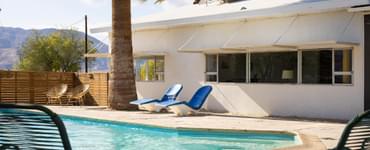
SOLD: Fortiner Residence by Lloyd Ruocco (1949)
SOLD: Fortiner Residence by Lloyd Ruocco
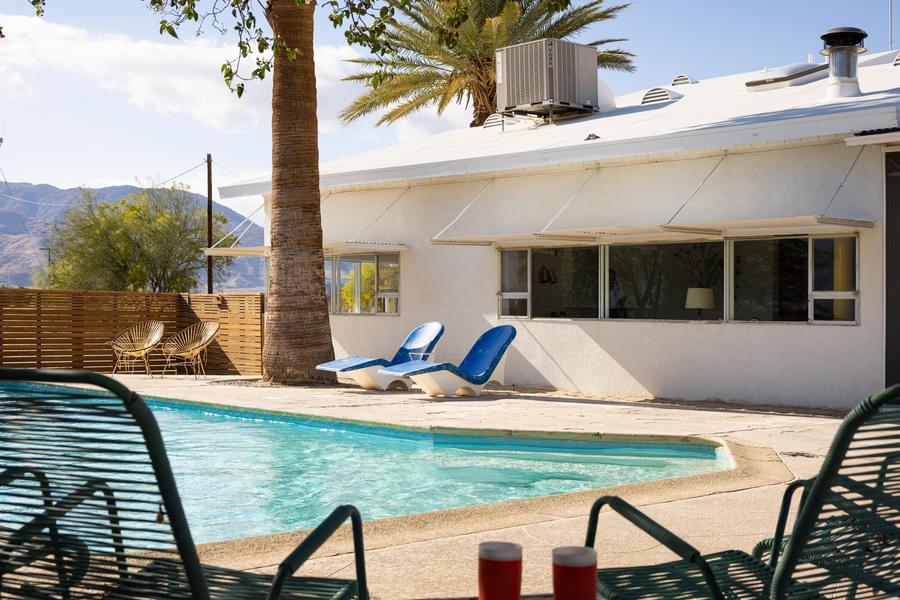
MODERNISM IN THE DESERT: The Fortiner Residence by architect Lloyd Ruocco commands its 79-acre flat landscape – a former citrus grove in northern Borrego close to the Coyote Canyon trailhead. Enjoy wide open skies, clean air and privacy poolside and from within the steel, glass and concrete modernist home (originally published in Redbook in 1951). Ruocco returned to the site (circa 1961) to add the primary bedroom suite creating twin pavilions flanking the screened-in breezeway. This unique property offers a wide array of potential uses – from vacation rentals to hosting retreats or health & wellness events, to leveraging the movie set-like outbuildings for film and photography.
Architect
Lloyd Pietrantonio Ruocco
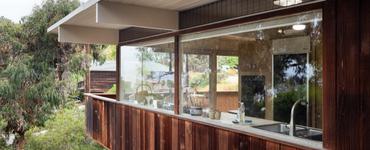
RENTED: Frivaldsky Residence by Ruocco & Delawie Architects (1961)
RENTED: Frivaldsky Residence by Ruocco & Delawie Architects

Residence for Mr. & Mrs. Joseph Frivaldsky (1959-61) by Ruocco & Delawie Architects, in Del Mar, is available for lease. In nearly original/vintage condition, this mid-century modern post 'n' beam jewel engages distant ocean views from a very private, native landscape. This wood and glass gem reflects a time and place that spawned an area replete with the region's architects and grew into one of the most prized coastal neighborhoods in San Diego County. The Frivaldsky Residence served its original commissioning clients for decades, and now is your chance to call this rustic pavilion home.
Architect
Lloyd Pietrantonio Ruocco Homer Delawie
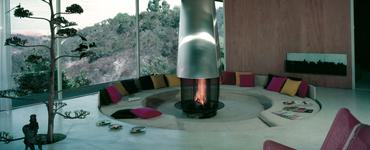
Lloyd Ruocco Residence #2 AKA Solari (1954)
Lloyd Ruocco Residence #2 AKA Solari
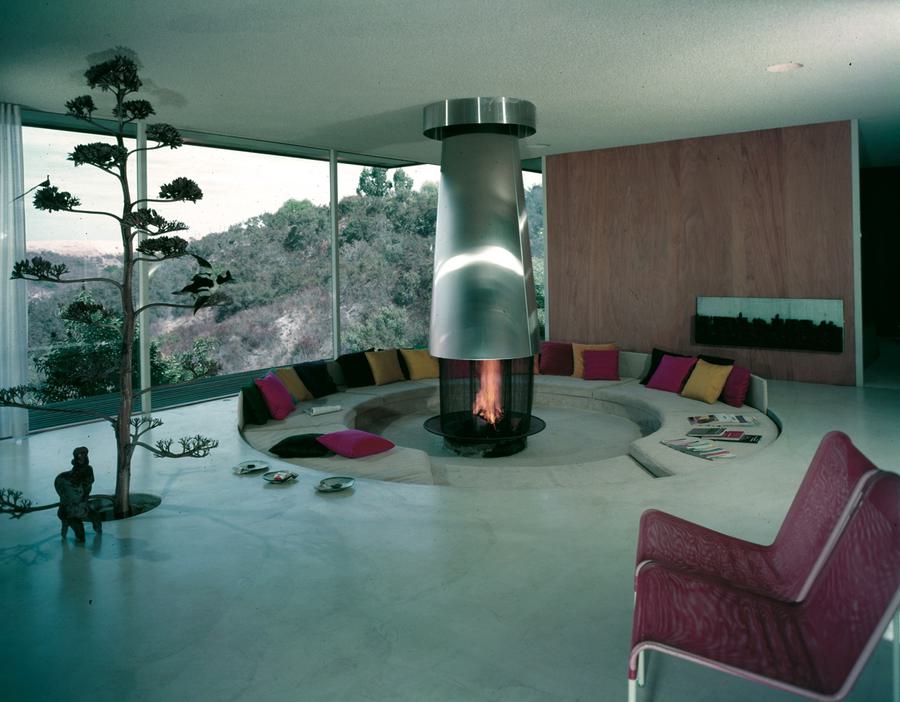
Architect
Lloyd Pietrantonio Ruocco
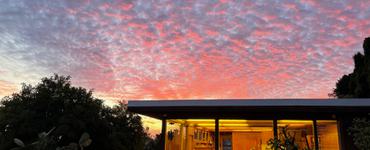
SOLD: Linton House Attributed to Lloyd Ruocco (1955)
SOLD: Linton House Attributed to Lloyd Ruocco
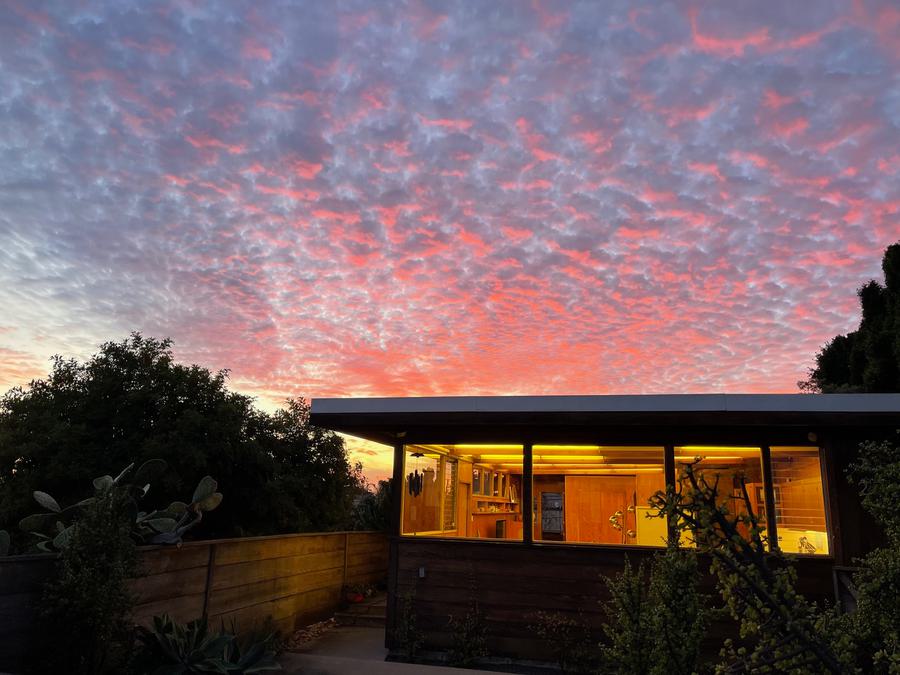
This 4-bedroom, 2-bathroom home of 1,319 square feet has a new insulated roof, paid solar, all new HVAC equipment and a number of unique, original details. Built by the original owner and local building contractor Howard Stiner.
Architect
Lloyd Pietrantonio Ruocco

SOLD: Johann House by Lloyd Ruocco (1956)
SOLD: Johann House by Lloyd Ruocco
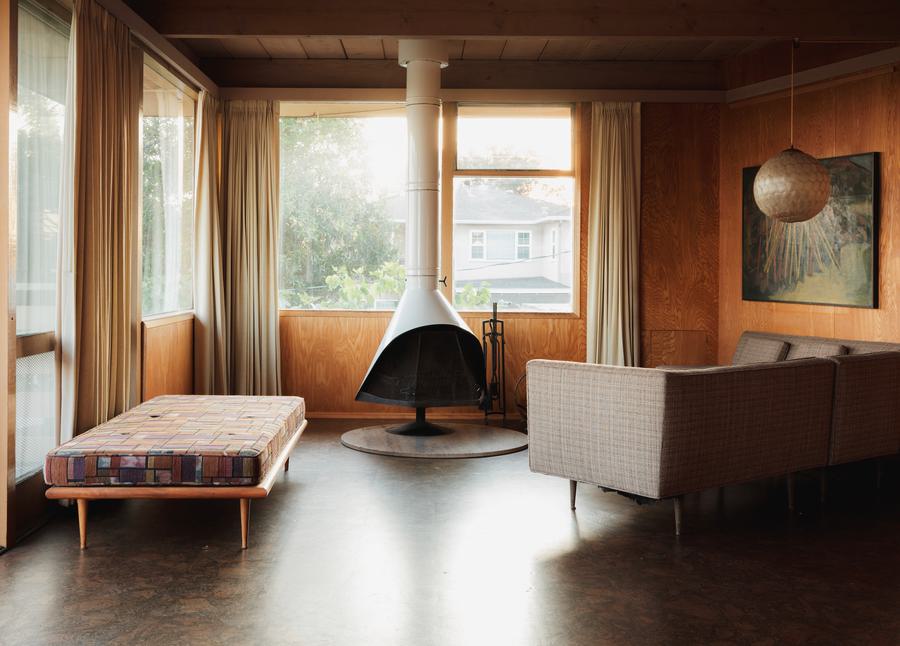
The historically designated Johann Residence, by architect Lloyd Ruocco, in vintage/original condition offers an abundance of indoor and outdoor space and fantastic views to the south. Set amidst 0.6 acres of macadamia nut trees and other fantastic mature plantings, this home still retains a number of its original features including modular livingroom walls and abundant built-ins, as well as natural light through walls of glass. Since its last sale, the sellers have added a significant solar array and converted the basement to a 1-bedroom, 1-bathroom apartment with its own entrance.
Architect
Lloyd Pietrantonio Ruocco
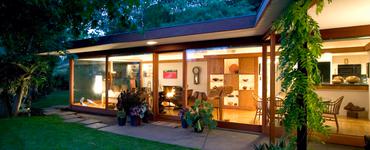
SOLD: Bleecker House by Lloyd Ruocco (1942)
SOLD: Bleecker House by Lloyd Ruocco
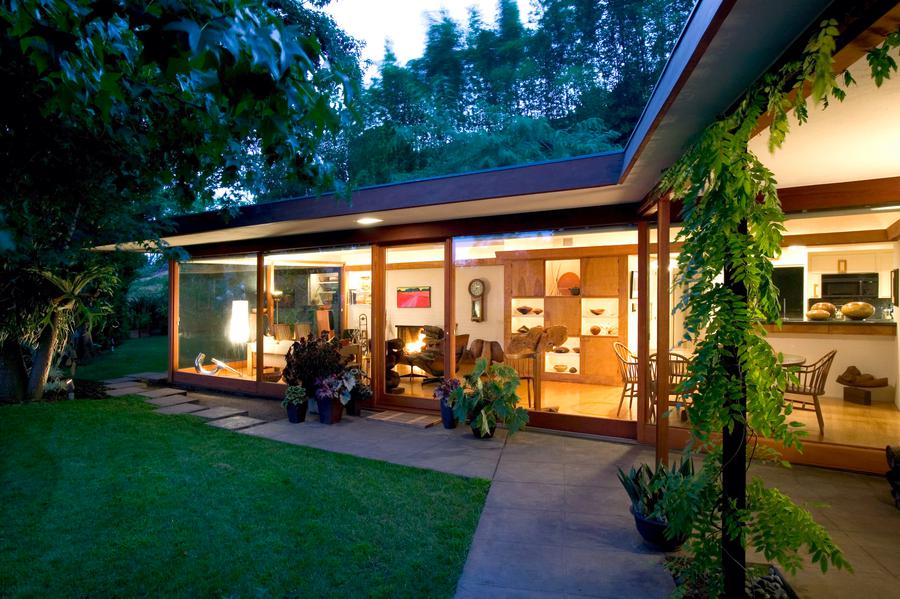
At the time of hiring their architect, the original commissioning clients “…asked three important things for their house to be…" The 3-Wishes House was published by The Building Forum, Good Housekeeping Magazine circa 1942. Devoted readers of the magazine could send away for an information packet with photos of the Mt. Helix-built example. When it arrived in the mail, the packet offered, “This sketch-plan is a preliminary guide for home study and discussion with your architect…detailed working drawings should be prepared to conform with local building codes and meet the special requirements of your individual site… For more information concerning blueprints write directly to the architect… Lloyd Ruocco 3603 Fifth Avenue San Diego.” These images by photographer John Durant were originally published in San Diego Home/Garden Magazine in June 2005.
Architect
Lloyd Pietrantonio Ruocco

SOLD: Keller House II by Lloyd Ruocco (1948)
SOLD: Keller House II by Lloyd Ruocco
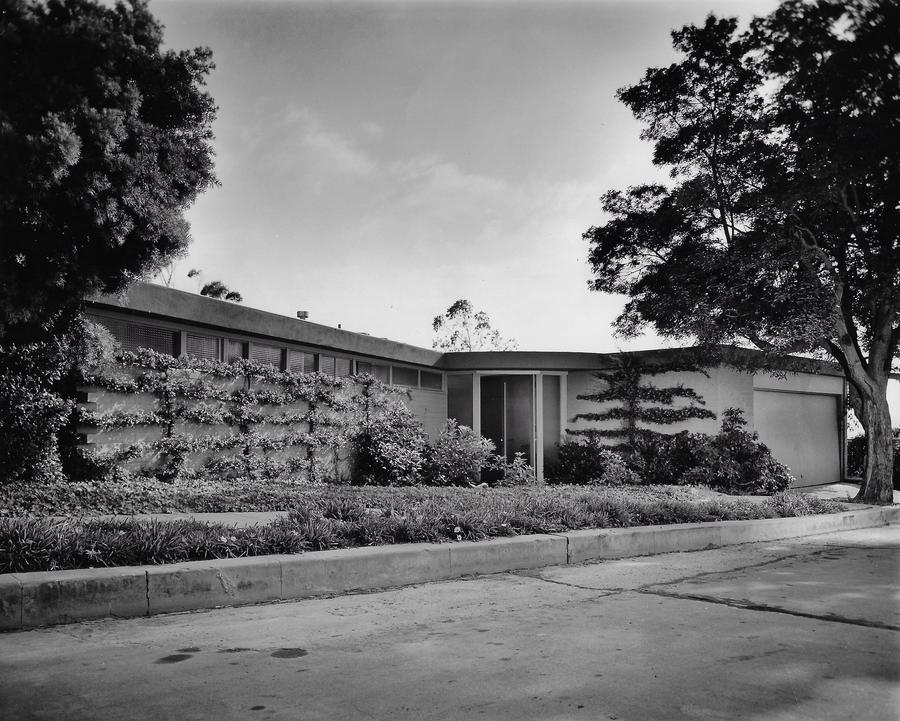
Following his 1944 home for James Don Keller, architect Lloyd Ruocco designed another home for his client following his marriage to new wife Rita. Sited to engage views of downtown where Keller worked until 1970 as San Diego County District Attorney, the Keller Residence has only hosted four owners since its 1947 construction.
According to The District Attorney’s Office: A Brief History by Gayle Falkenthal, “James Don Keller was elected on a “reform” ticket. Keller was known as a very modest, straight-arrow personality not given to any frivolous moments. This meant no more drinking during the day by D.A. staff. Knocking back a martini (or three) during the lunch hour was perfectly routine behavior. Keller would have none of this, which was considered terribly strict. Keller and his senior staff were responsible for the modern structure of the D.A.’s office.”
With amazing views of the harbor, airport, Point Loma and the Coronado Islands, the Keller Residence is breathtaking. This 3-bedroom, 3.5-bathroom, two-story home of 3,300 square feet was completed in 1948 - making it among the earliest, truly modern homes built following the conclusion of World War II.
Remodeled a number of years ago, by a local architect/owner, the home features a number of contemporary finishes and landscaping touches. Historically designated, with Mills Act tax-savings conveying to the next owner, Keller retains much of its vintage/original wonder.
Architect
Lloyd Pietrantonio Ruocco
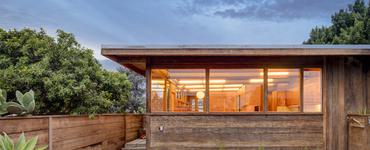
SOLD: Linton House by Lloyd Ruocco (1955)
SOLD: Linton House by Lloyd Ruocco

The Linton House is likely the byproduct of a unique collaboration between electrical engineer Russ Linton and architect Lloyd Ruocco. Wonderfully sited in a canyon setting in southern City Heights, this 4-bedroom, 2-bath home will draw you in from your first view of its Spanish Cedar façade surrounded by exotic succulents and mature plantings. Visitors will be captivated by the condition of the home’s stained plywood interiors, decades-old cork flooring and a wealth of storage opportunities through generous built-ins. The post-n-beam structure is highlighted by tongue ‘n’ groove ceilings and exterior siding. Period touches include generous glass surfaces welcoming the outdoors inside, a very unique bathroom skylight, stereo cabinetry akin to the work of local furniture designer John Dirks and the most unique fluorescent indirect lighting throughout the home.
Architect
Lloyd Pietrantonio Ruocco
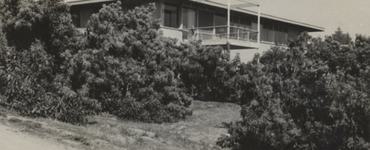
SOLD: Johann House by Lloyd Ruocco (1956)
SOLD: Johann House by Lloyd Ruocco
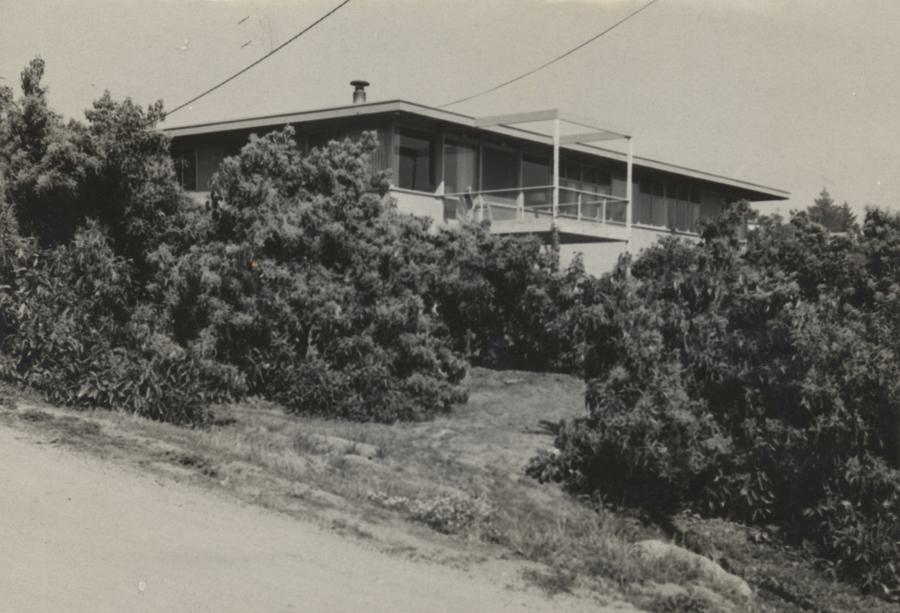
Architect
Lloyd Pietrantonio Ruocco
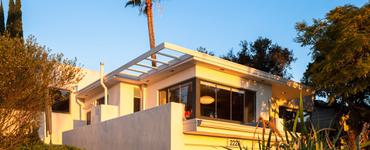
SOLD: Clitsome House by Lloyd Ruocco (1938)
SOLD: Clitsome House by Lloyd Ruocco
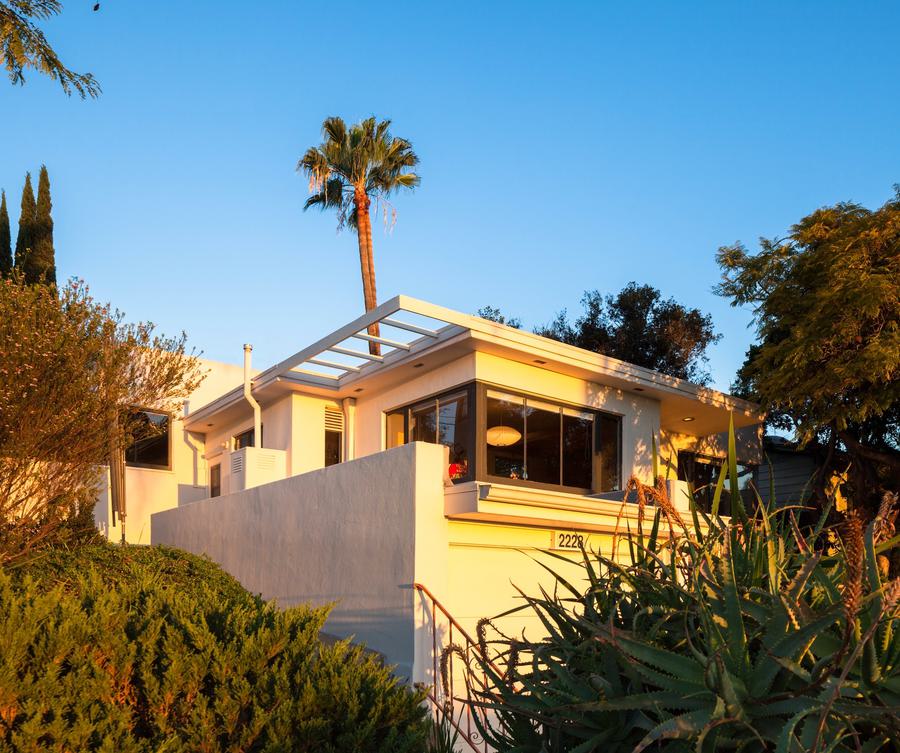
This stunning example of International Style architecture, designed by Lloyd Ruocco, is a rarity beyond compare. Believed to be the architect’s first fully realized project, The Clitsome Residence (1938) helped to initiate a multi-decade career that spawned San Diego’s modernist heritage. Ruocco designed both the home and landscape, planting several of the original trees and shrubs himself, many of which remain today. Designing over 100 projects throughout the region, Ruocco’s work paved the way for architects, artists and designers for many years to come. This home showcases some of the tools Lloyd Ruocco would return to for years to come including flat roofs, exposed wood interiors while still reflecting on the Los Angeles work by world-renowned architects Rudolf Schindler and Richard Neutra of the period. Enjoy an expansive view to the east as well as the outdoors from every room through plentiful expanses of glass.
Architect
Lloyd Pietrantonio Ruocco

SOLD: Beers House by Lloyd Ruocco (1957)
SOLD: Beers House by Lloyd Ruocco
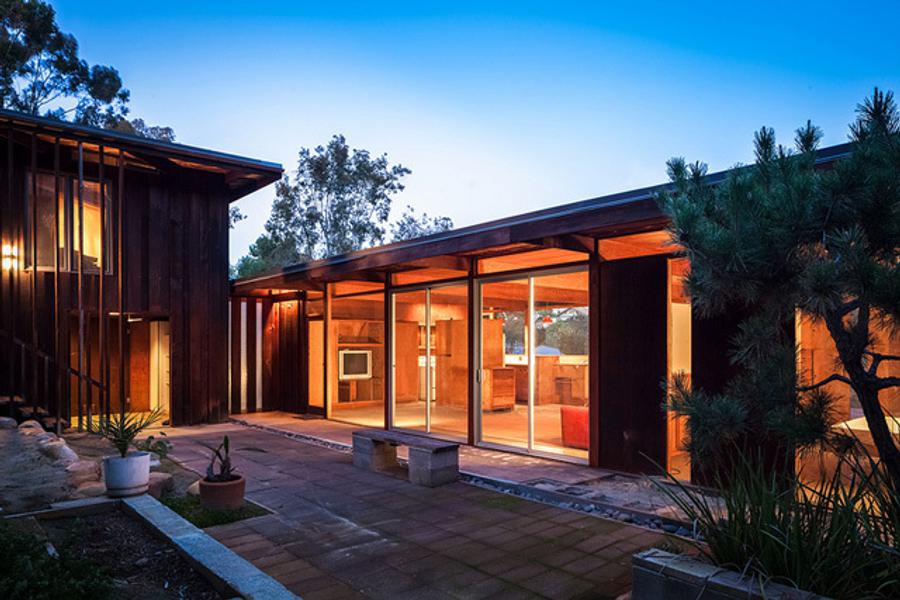
The Beers Residence by San Diego architect Lloyd Ruocco has only sold once since Mr. and Mrs. Will Beers purchased plans from the architect and built much of it with their own hands and the help of Mr. Beers' father who was a professional carpenter. In 1954, the Beers family hired Ruocco again to design an annex for washing facilities, a carport and two bedrooms & a bath for their children (in 1960). Engaged with its surroundings via walls of glass, more so akin to the works of RM Schindler than other Ruocco homes, this garden pavillion, is comprised of four bedrooms, four bathrooms and a unique indoor-outdoor connection between the living spaces. The Beers Residence is a rarity these days - a pristine example of post-War architecture saved from the clutches of remodelers, flippers, and careless owners, this two-owner home is in museum-quality condition. In 2000, architect Leonard Veitzer, a student of Ruocco, designed a 3rd building for the Beers' daughter in keeping with the modern style of the original. All three buildings are separate yet connected via outdoor stairs/courtyards. This unique family home expresses the architect and client’s mastery of post-war modernism open to San Diego’s moderate climate, bringing the outside in and making the most of spectacular canyon side views. Mostly glass and redwood, this garden pavilion has stood the test of time serving a family well on this quiet cul de sac.
Architect
Lloyd Pietrantonio Ruocco
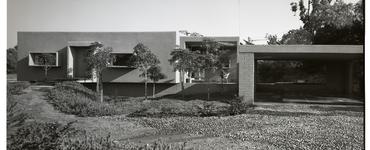
Ishikawa Residence (1969)
Ishikawa Residence

Architect
Lloyd Pietrantonio Ruocco

Keller Residence III (1963)
Keller Residence III
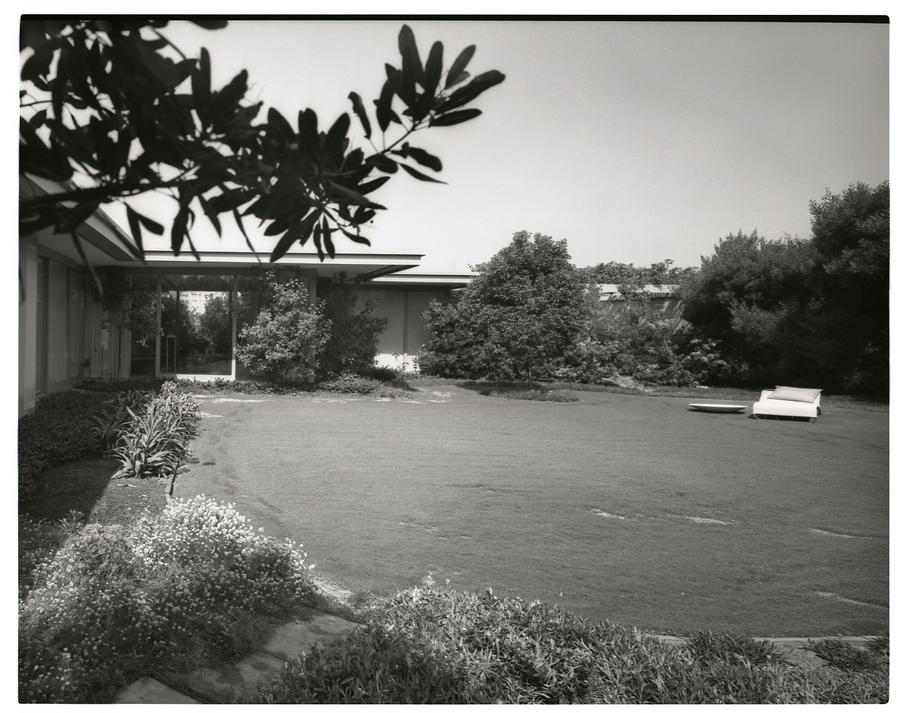
Architect
Lloyd Pietrantonio Ruocco
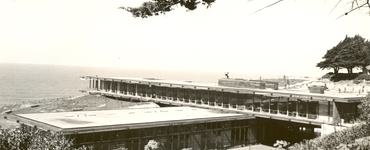
Institute of Geophysics and Planetary Physics (IGPP) (1963)
Institute of Geophysics and Planetary Physics (IGPP)
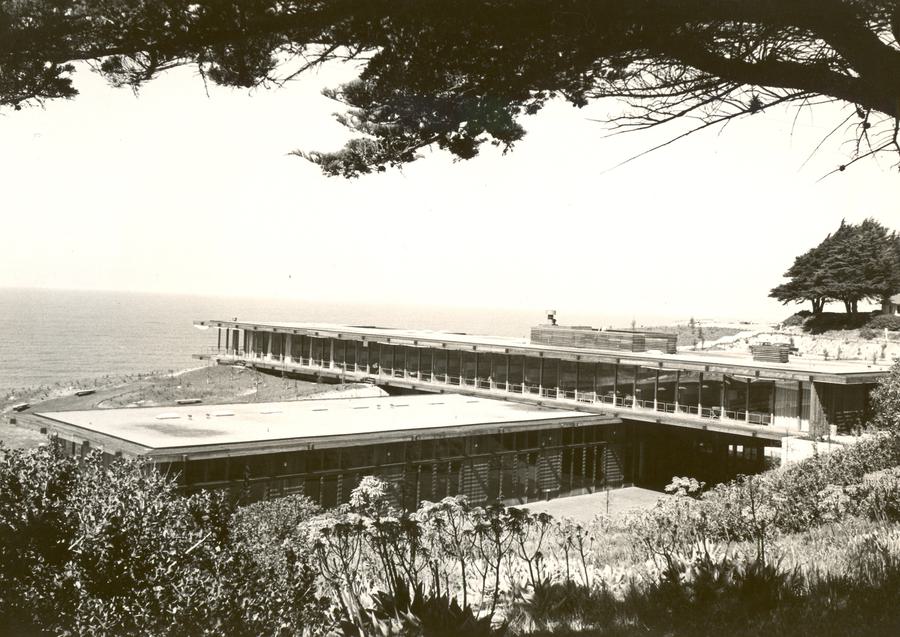
Redwood and glass structure that seems to float above the ocean from its hillside perch. Central hall aligns with the setting sun on the vernal equinox. Later additions mimic the design of the original lab/office facility. This radical architect that loved glass and landscaping, was quoted as saying “good architecture should call for the minimum use of materials for the most interesting and functional enclosure.” Arriving in San Diego in 1923, Lloyd Ruocco worked for Richard Requa to fund an education at UC Berkeley. Despite the citizens of La Mesa rejecting his plan to put their property in a common plot and rebuild on an intelligent master plan to achieve the ultimate in modern efficient living, he is remembered for his remarkable (and still lasting) contributions to San Diego architecture.
Architect
Lloyd Pietrantonio Ruocco
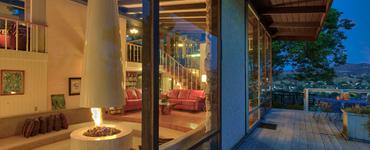
Herrera Residence (1970)
Herrera Residence
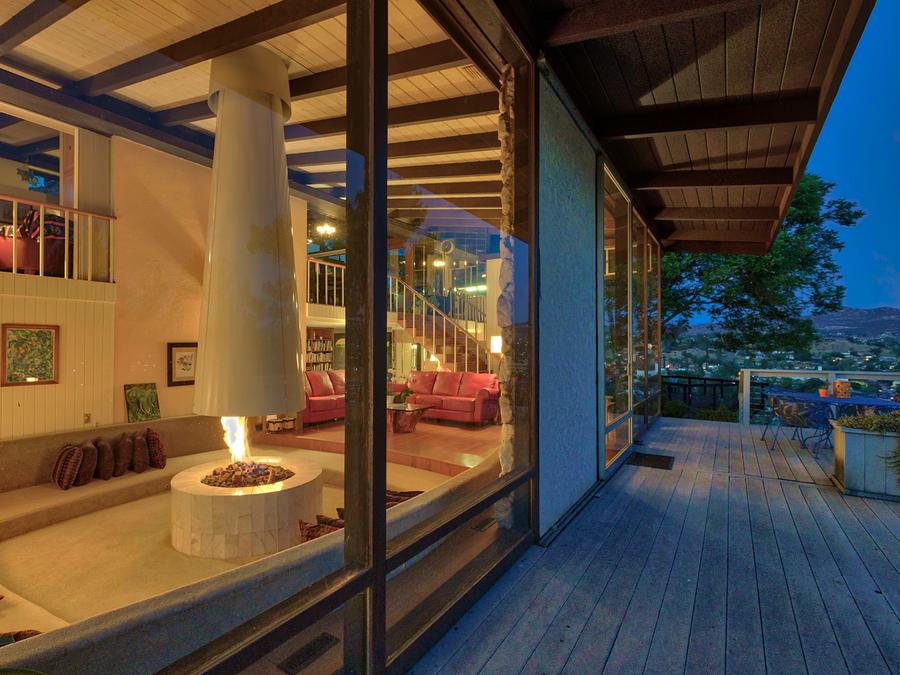
Architect
Lloyd Pietrantonio Ruocco
Can't Miss Modern!
Sign up for our newsletter and get exclusive content from Modern San Diego.